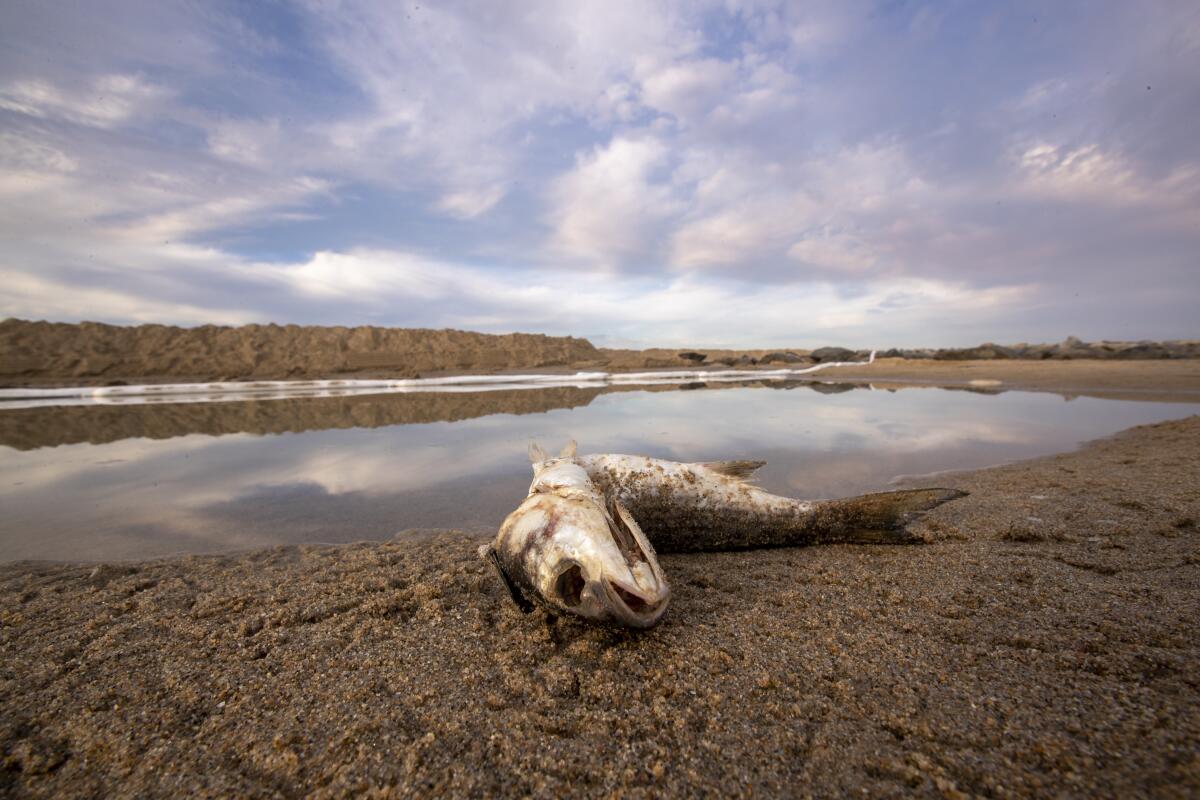Ruptured pipeline was shut down more than 3 hours after low pressure alert, officials say

- Share via
The energy company at the center of the oil spill off Orange County was alerted early Saturday that something was awry with its offshore pipeline, but it took more than three hours before the pipeline was shut down, federal regulators said Tuesday.
The timeline appears to contradict statements by the pipeline operator’s parent, Amplify Energy Corp., that the firm discovered the oil slick later on Saturday morning and immediately notified authorities.
Federal regulators said that employees in the control room of the subsidiary that operates the San Pedro Bay Pipeline received a low pressure alarm, “indicating a possible failure,” at about 2:30 a.m. Saturday.
Martyn Willsher, Amplify’s president and chief executive, told The Times on Tuesday that the company first learned of the leak at 8:09 a.m. Saturday. He denied that anyone at the firm was alerted to the leak at 2:30 a.m. by a change of oil pressure in the pipe but would not elaborate, saying the facts would emerge during the investigation.
The new timeline was included in a lengthy letter sent Tuesday by federal regulators who demanded a long list of records from the operator, broadening their reach into the environmental disaster and providing new details about how the company discovered the spill.
In a 13-page letter to Willsher, U.S. Department of Transportation regulators said the pipeline must stay shut off until employees can prove that it can be operated safely.
The agency also laid out new information gathered in a preliminary investigation by the Pipeline and Hazardous Materials Safety Administration, which regulates the nation’s 2.6 million-mile pipeline network, including those off California.
Among those findings:
- Employees in the control room of Beta Offshore, the subsidiary of Amplify Energy that operates the San Pedro Bay Pipeline, received a low pressure alarm, “indicating a possible failure,” at about 2:30 a.m. Saturday.
- The company shut off the pipeline at 6:01 a.m., more than three hours after receiving the low pressure alarm.
- The National Response Center received an alert from the company at 9:07 a.m. that “there was a release of crude oil in the vicinity of its pipeline” near the processing platform known as Elly.
- The location of the spill may be about five miles offshore, where the water is about 98 feet deep.
- The cause of the leak is unknown, but preliminary reports “indicate that the failure may have been caused by an anchor that hooked the pipeline, causing a partial tear.”
- Before the rupture, the pipeline was operating at about 30% or less of its maximum operating pressure.
- As of Monday night, when the letter was signed by a federal regulator, the company was still in the process of “recovering product in the pipeline.”
“Continued operation of the pipeline without corrective measures” could be hazardous to life, property or the environment, the agency’s associate administrator for pipeline safety wrote in the letter, adding that not issuing the order would “result in the likelihood of serious harm.” Amplify has 10 days to request a hearing on the case, the letter said.
“This is a terrible tragedy and we are extremely sorry this happened,” Willsher said. “The cause of this will still need to be investigated, but regardless of the cause we are going to do everything we can to make things right for all of those impacted areas and individuals as quickly as we can.”
Before Amplify Energy can restart the pipeline, company officials must provide a plan to federal regulators showing that it is safe to operate, PHMSA wrote. Company officials will also need to explain whether “conditions similar to those contributing to the accident” may exist elsewhere along the 17-mile pipeline, which runs for 15 miles underwater and two miles on shore.
Within the next six months, the company will be required to provide a review of all previous inspections of the inside of the pipeline, which typically identify signs of dents, cracks or corrosion. Regulators are also requesting a written report of the history of failures and leaks, including locations, dates and causes, on the 16-inch pipeline, which was installed in 1980.
When the pipeline restarts, federal regulators will limit the pressure allowed inside the pipeline, they wrote, limiting Beta Offshore to 80% of the operating pressure at the rupture point immediately before the accident.
Times staff writer Richard Winton and Anita Chabria contributed to this report.
More to Read
Sign up for Essential California
The most important California stories and recommendations in your inbox every morning.
You may occasionally receive promotional content from the Los Angeles Times.













